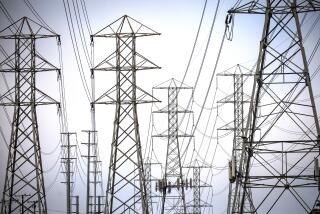Fall Means It’s Time to Check the Furnace
- Share via
Pop quiz.
Where is your furnace located? (a) In the hall closet. (b) In the attic. (c) I think it’s that round thing on the roof.
What powers your furnace? (a) Electricity. (b) Natural gas. (c) Heck if I know.
The answers to these questions are important for any homeowner. Most furnace experts advise that homeowners inspect their heating units every fall and call a licensed contractor if anything looks awry.
One hint: About 99% of the furnaces in single-family homes in the Southland are powered by natural gas. Consequently, the first stop for most Southern California homeowners when servicing their furnace is their local gas company.
(The local gas company for the majority of homeowners here is Southern California Gas, whose territory stretches to San Luis Obispo on the north, the California-Arizona border on the east and the Mexican border on the south, excluding San Diego County and the city of Long Beach.)
Many homeowners fail to check their heaters on a regular basis, which can lead to high utility bills.
“Quite often, I hear stories of people with outrageous bills who find out their equipment is faulty,” said Susie Evans, executive vice president of the Glendale-based Institute of Heating and Air Conditioning.
The gas company sends checklists each summer to its customers, reminding them to take a look at their furnaces.
There are several things homeowners can do to check that their furnace is operating properly:
* Examine the pilot light. The flame should be bright blue. (It’s normal for red flecks, caused by ignited dust particles, to appear in the flame.) It needs fixing if the flame is yellow, orange or red.
* Clean away lint or dirt that has accumulated around and inside the furnace. Lint tends to collect inside wall furnaces particularly, said Denise King, a spokeswoman for Southern California Gas Co.
* Inspect and clean air filters (which are usually included in forced-air furnaces).
* Make sure the furnace is venting properly. Telltale signs of blocked vents include soot around the furnace, and moisture that beads on windows when the heating unit is on.
* Clear away items stored around or on furnaces.
Southern California Gas Co. technicians will come out to relight pilot lights on furnaces and make other minor fixes, but they do not do major repair work that involves taking the unit apart, King said.
If a homeowner decides to call a contractor to look at a furnace, the inspection fee should be the price of a house call, which typically ranges from $60 to $130, said Steve Lehtonen, executive vice president of the Plumbing, Heating and Cooling Contractors Assn. of California.
*
For an earlier article on fire danger from faulty attic furnaces and a link to a discussion board, see https://www.latimes.com/furnace.
More to Read
Sign up for The Wild
We’ll help you find the best places to hike, bike and run, as well as the perfect silent spots for meditation and yoga.
You may occasionally receive promotional content from the Los Angeles Times.






